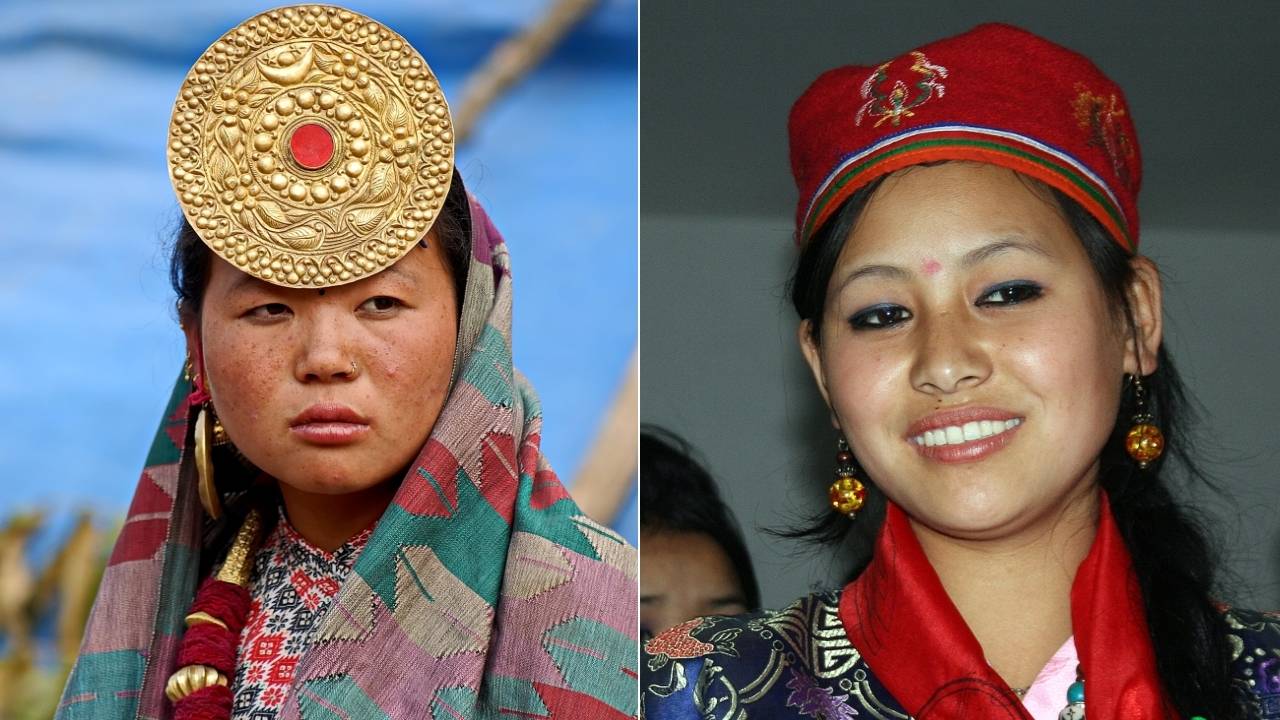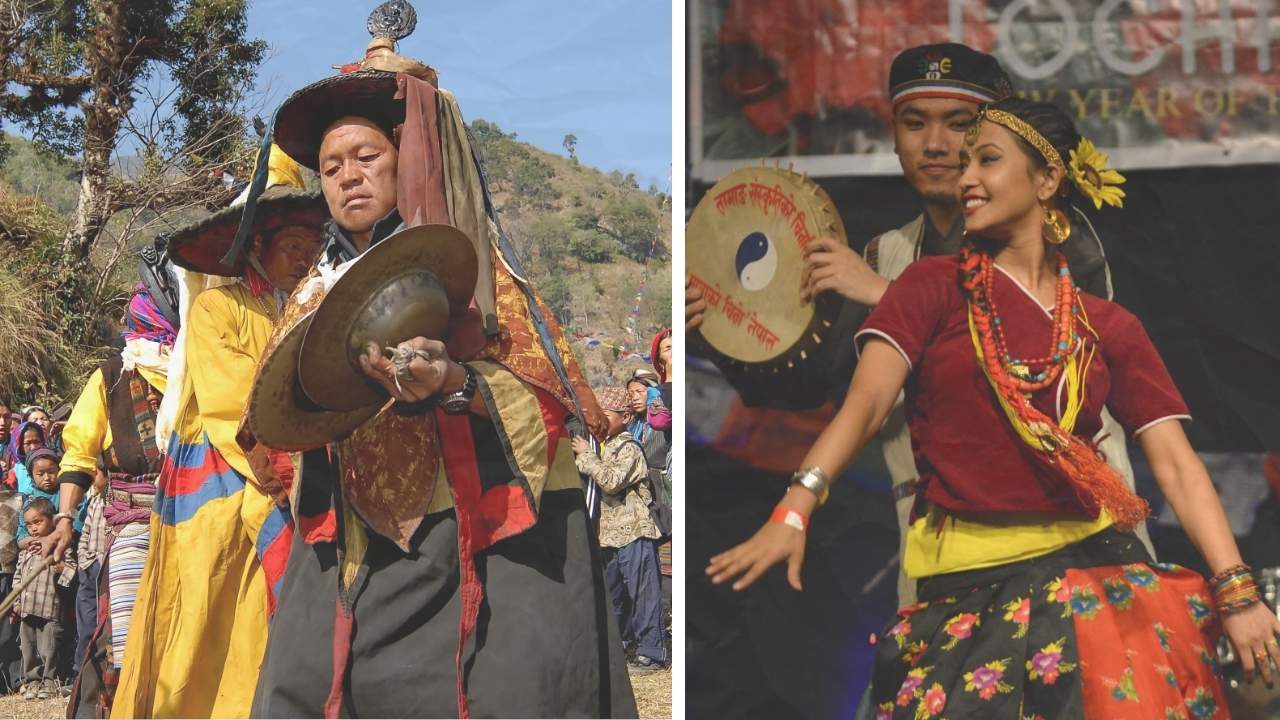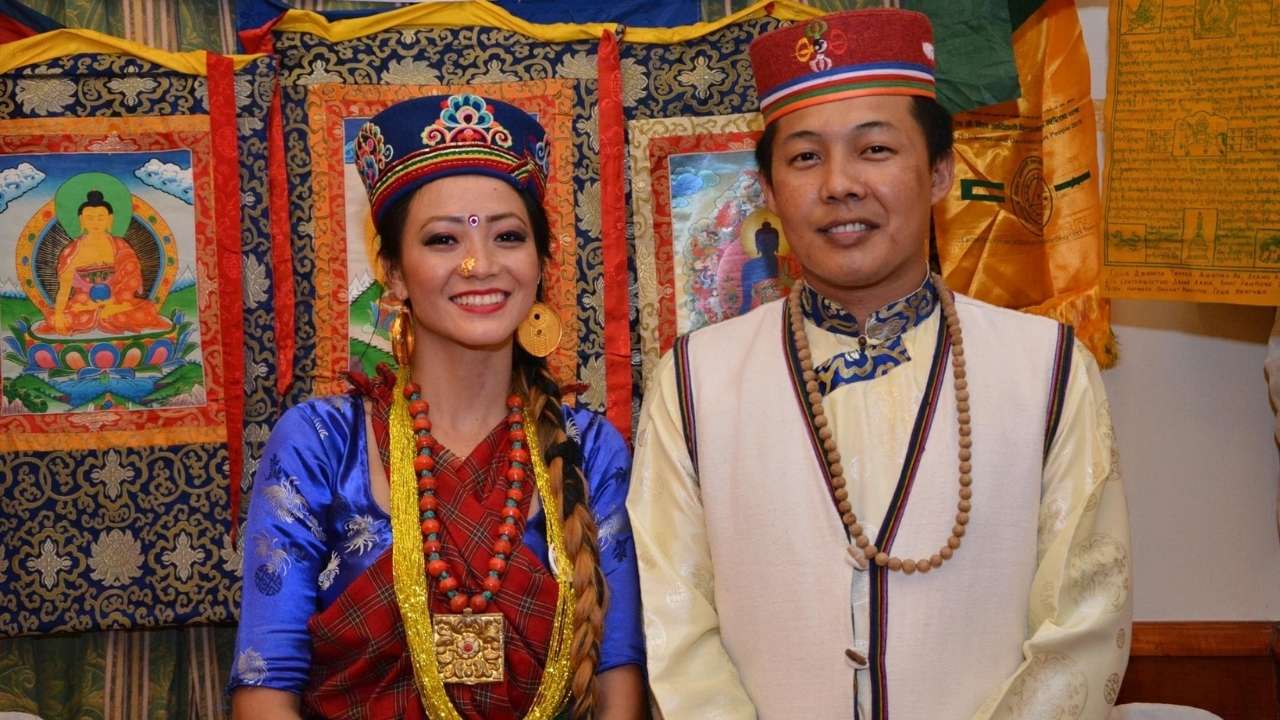Nepal is home to many beautiful cultures. The Tamang people are one of the oldest and most colorful communities in the country. Their warm nature, unique traditions, Buddhist beliefs, and deep connection with the mountains make them special. Learning about the Tamang people is like exploring a living museum of history and culture.
Introduction to the Tamang People of Nepal
The Tamang people of Nepal are one of the largest and oldest ethnic groups in the country. They belong mainly to the hilly and mountain regions around central Nepal. Historians believe that the Tamang community has lived in these areas for hundreds of years, long before the formation of modern Nepal. Due to this long history, they have a strong cultural identity that still continues even today.
Most Tamang people live in districts such as Rasuwa, Nuwakot, Kavre, Dhading, Sindhupalchok, Makwanpur, Dolakha, and around the Kathmandu valley. Many Tamang also live in the Langtang region. The Langtang region is known for its beautiful landscapes and rich Tamang traditions. Their villages are usually found on hill slopes, near forests, and close to rivers. These areas provide them with a natural and peaceful environment.

The word “Tamang” is believed to come from two ancient Tibetan words. “Ta” means horse, and “Mang” means warrior. Some stories say that Tamangs were once skilled horsemen or mountain warriors. Whether this story is fully true or not, it shows how deeply their past is linked with the Himalayan region.
Today, the Tamang people are known for their friendly nature, strong community bond, and hardworking lifestyle. They farm the land, raise animals, build beautiful stone houses, and preserve their old customs with pride. When we learn about the Tamang people of Nepal, we also learn about the history of the Himalayas. We can learn the stories of ancient tribes and the beauty of Nepal's cultural diversity.
The Tamang People of Langtang Region
The Langtang region is one of the most important cultural homes of the Tamang people. It lies north of Kathmandu, which is close to the Tibetan Border. This region is known for its stunning mountains, forests, and traditional villages. For centuries, the Tamang people of Langtang have lived in this high Himalayan area. Their lifestyle is around nature, weather, and the mountains that surround them.
Life in Langtang is simple, but it is deeply connected to the environment. Most of the Tamang families here depend on farming, herding, and tourism. They grow potatoes, barley, wheat, and vegetables on small terraced fields. Because of the cold climate, they also raise yaks, cows, and goats. These animals provide milk, butter, meat, and wool, which are important for daily life in the mountains.

The Tamang people of Langtang are well known in Nepal's trekking world. Many work as guides, porters, cooks, and lodge owners. Their warm hospitality makes trekkers feel at home. Villages like Langtang, Kyanjin Gompa, Syabrubesi, and Thulo Syabru are famous stops where you can experience the Tamang Culture directly. Tourists often enjoy their traditional food, music, and the peaceful life of these mountain communities.
The Tamang people of Langtang follow the Buddhist tradition strongly. Monasteries, prayer flags, and religious festivals are part of their everyday world. After the 2015 earthquake, the community rebuilt its homes and cultural sites with great courage, showing its strength and unity.
For the Tamang people, Langtang is their identity. The mountains, forests, and rivers hold spiritual meaning. Their traditional way of life continues to be protected and celebrated in this beautiful Himalayan region.
Tamang Language: Their Strong Identity
The Tamang Language is one of the most important parts of the Tamang people's identity. It belongs to the Tibeto-Burman language family. It is related to many languages spoken in Tibet, Bhutan, and the northern parts of Nepal. For hundreds of years, the Tamang people used this language to share stories, songs, prayers, and everyday conversations. Due to this, the language is closely tied to their history and cultural roots.
The Tamang language is spoken mainly in the hilly district of Central Nepal. The language has many local variations. A Tamang person from Rasuwa may speak slightly differently from someone in Dolakha and Makwanpur. Despite these differences, the Tamang people can understand each other easily, which reflects the strength and unity of language.
The language uses its own writing system, but in many places, people write it using the Roman or Devanagari script. Older Tamang people learned the language naturally at home, but today many schools and community groups are teaching it formally. This helps to protect language for the future.
The Tamang language is more than just words; it expresses the community's emotions, beliefs, and way of life. Their famous songs, like Tamang Selo, sound beautiful because they carry the rhythm of the language. Many young Tamang people are also trying to learn the language, especially during festivals, cultural programs.
With modernization and migration, some young people use Nepali and English more. Many organizations, mothers' groups, and cultural centers are working hard to preserve the Tamang Language. Language remains a powerful symbol of pride, unity, and cultural identity for the Tamang people of Nepal.
Tamang Dress: Beautiful and Traditional
The traditional dress of the Tamang people is an important part of their identity. The dresses reflect their history, culture, and connection to the Himalayan region. Tamang clothing is simple, comfortable, and sustainable for the hills and mountains. Still, it carries deep cultural meaning.
For Tamang women, the traditional outfit is called a Phariya, which is a wrap-around skirt made of thick, warm fabric. They wear it with long-sleeved blouses in bright colors like red, blue, or green. Women also wear a Chyuba, which is a long coat used in colder months. Jewelry is one of their most eye-catching parts. Tamang women love wearing heavy silver, gold, and bead ornaments mostly during festivals. Large earrings, necklaces, and bangles are common. Each piece of jewelry has a cultural meaning or family value.
For a Tamang man, the traditional dress includes a Labeda Suruwal, Bhoto, Tetung, Hanju and Bakkhu. They also wear a tam or traditional cap, which gives them a distinct Himalayan look. On special occasions, men may wear a warm wool coat, often made from thick local materials.
The Tamang people proudly wear their traditional clothing during festivals like Sonam Loshar and cultural programs. The bright colors, patterns, and jewelry make these celebrations lively and beautiful. Nowadays, many Tamang people also wear modern clothes for daily life, but they still keep their traditional dress alive to honour their ancestors and preserve cultural identity.
Tamang Buddhism and Spiritual Life
Buddhism plays a very important role in the daily life of the Tamang people. Their belief, values, and traditions are closely connected to Tibetan Buddhism, which has been practiced in the Himalayan region for centuries. For the Tamang community, religion is not just a set of rules. It is a way of living with peace, kindness, and respect for all beings.
In Tamang villages, we can often see monasteries (gompas), prayer wheels, and colorful prayer flags. These spiritual symbols remind people to stay calm, compassionate, and mindful. Monasteries are the center of religious activities. Monks chant prayers, teach Buddhist values, and lead important ceremonies.
The lama or spiritual leader has a special role in the Tamang community. Lamas guide people during weddings, funerals, house blessings, and festivals. They offer advice, perform rituals, and maintain harmony in the village. Many Tamang children also learn basic Buddhist teachings from Lamas.
Festivals are a big part of Tamang Buddhism. They celebrate Sonam Loshar as their New Year celebration, which is the most popular festival. People visit monasteries, perform rituals, dance the damphu dance, and enjoy family gatherings. Other important days include Buddha Jayanti, full moon prayer, and local festivals honoring deities and spirits.
The Tamang people also have deep respect for nature. Mountains, rivers, forests, and animals are considered sacred. They believe that everything in nature has life and should be treated with care. This strong spiritual connection helps them live in harmony with their surroundings.
Overall, Tamang Buddhism adds beauty, peace, and balance to their lives. They shape the community's identity and cultural strength.
Cultural Practices, Festivals, and Tamang Selo Music
The culture of the Tamang people is lively, colorful, and filled with strong communication bonds. Their traditions have been passed down for many generations, and they still follow them with great pride. Their most beautiful cultural practices are their festivals, music, dance, and group celebrations.
Tamang Selo is a famous cultural element of the Tamang people. It is a traditional form of music. Tamang Selo tells stories of love, happiness, sorrow, and daily life. The songs are rhythmic and catchy, which they performed using a musical drum called the Dhampu. The Dhampu dance is performed in a circle with graceful steps, which is one of the most culturally significant dances in the community. It brings people together and expresses unity and joy.

The biggest festival celebrated by the Tamang community is Sonam Loshar, the Tamang New Year. On this day, families gather to pray, feast, sit down, and begin the year with positive thoughts. People wear their best traditional dress, visit monasteries, and perform rituals for good health and happiness.
Other important celebrations include Buddha Jayanti, which is a full-moon ceremony and a harvest festival. During these events, the Tamang people show respect to their ancestors, nature, and spiritual beliefs. Storytelling, group songs, and sharing food play a central role in their gatherings.
Hospitality is also a strong cultural value. Guests are treated with warmth and respect, and food is shared generously. The Tamang culture continues to shine brightly across Nepal through music, festivals, and traditions.
Tamang people's Lifestyle, Occupation, and Mountain Living
The lifestyle of the Tamang people is closely connected to the hills and mountains where they live. Their daily life is simple, hardworking, and closely tied to nature. Most Tamang villages are found on mountain slopes, surrounded by forests, rivers, and terraced fields. Due to this environment, the community has learned to live in harmony with nature for many generations.
Farming is the main occupation of many Tamang families. They grow potatoes, maize, wheat, millet, and vegetables depending on the climate and land. The weather is cold in higher areas, so they raise animals like yaks, cows, go, and sheep. These animals provide milk, butter, meat, and wool, which are very important for their daily needs.
In recent years, many Tamang people have become involved in tourism. They work as trekking guides, porters, cooks, drivers, and lodge owners, especially in areas like Langtang and Helambu. Their friendly nature and local knowledge make them excellent guides for visitors. Tourism has helped many families to earn better incomes and improve their living conditions.
Traditional houses in Tamang villages are often made of stone and wood. They are designed to keep warm in winter. Their food is simple but healthy, which includes boiled potatoes, corn bread, rice, lentils, and homemade dairy products.
Education has improved in the Tamang community, giving young people more opportunities in teaching, business, hospitality, and government jobs. However, some challenges still exist, such as limited road access, poverty, and natural disasters like landslides and earthquakes.
Despite these difficulties, the Tamang people continue to maintain their traditions, support each other, and build strong communities in the hills and mountains of Nepal.
Modern Changes and the Future of the Tamang People
Modern life has brought many changes to the Tamang community. Today, more young Tamang people move to cities like Kathmandu or travel abroad for work, study, and better opportunities. This has helped families improve their income and living conditions. However, it also creates challenges in keeping their traditional culture, language, and daily customs alive.
With the influence of modern education, smartphones, and social media, younger generations often use Nepali or English more than their mother tongue. Traditional dress, ritual, and storytelling are not practiced as frequently as before. Still, many community groups, cultural organizations, and schools are working hard to protect the Tamang identity. They organize language classes, dance programs, and festivals like Sonam Loshar to encourage cultural pride.

Tourism has also played a positive role. In areas like Langtang, Helambu, and Rasuwa, income from guiding, homestays, and lodges helps Tamang families support education and community development. At the same time, tourists enjoy learning about Tamang music, dance, and lifestyle, which inspires families to continue their traditions.
Looking ahead, the future of the Tamang people is promising. With better education, growing cultural awareness, and stronger community efforts, the Tamang heritage can be preserved while still embracing progress and modern opportunities.
The Tamang people of Nepal carry a rich heritage of language, music, dress, and Buddhist tradition. Despite modern changes, their culture remains strong through community unity and pride. With growing education and cultural awareness, the Tamang identity will continue to shine and inspire future generations.

